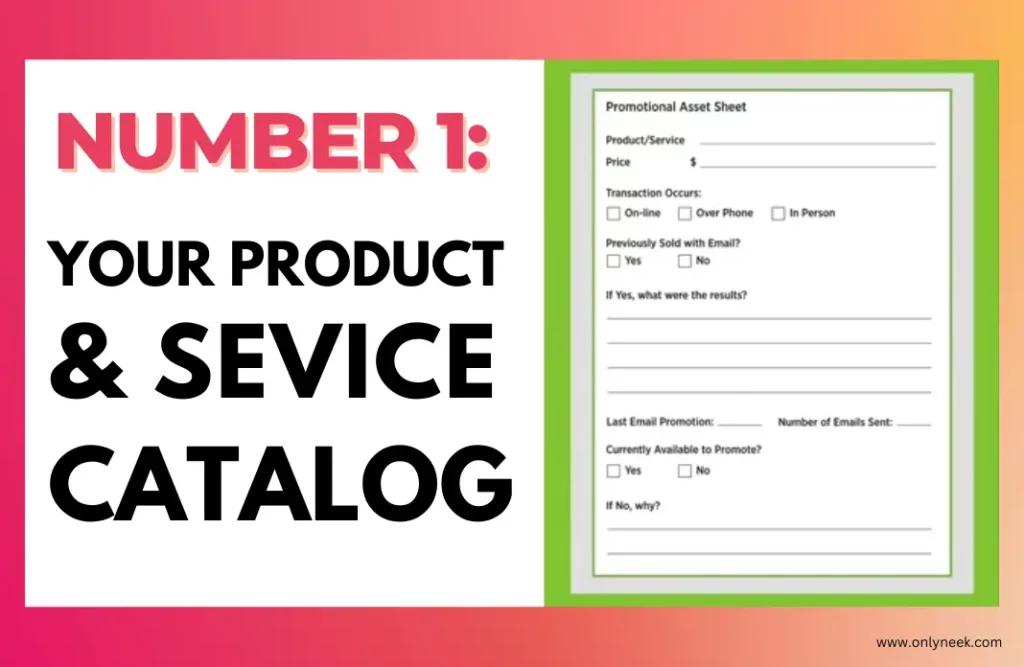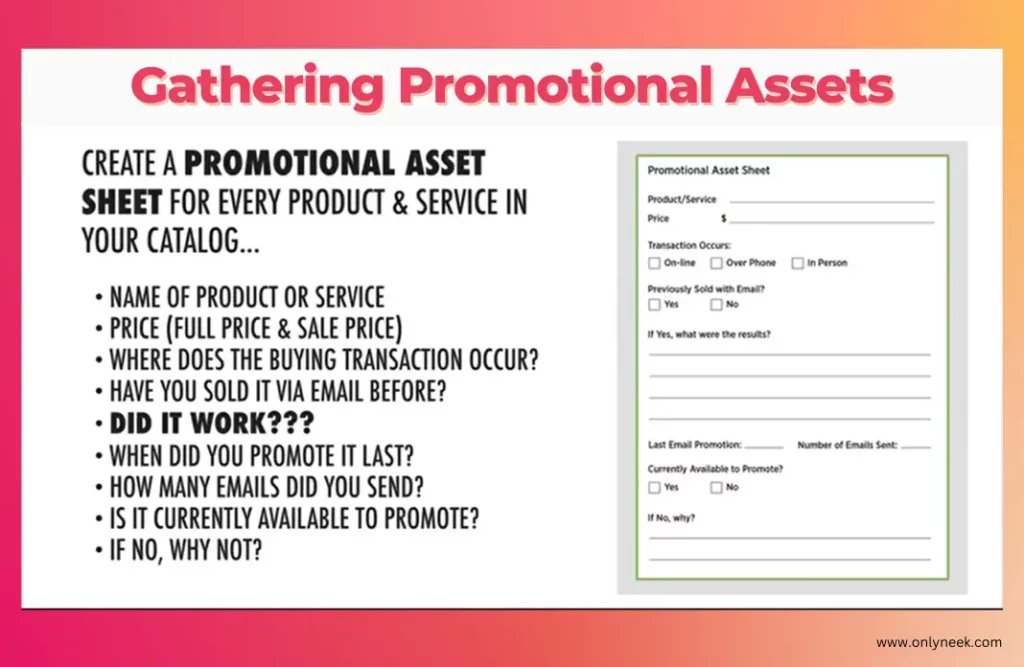How to Create the perfect marketing calendar? What is The Role of the Promotional Marketing Calendar? What are the vital two assets to create a winning marketing calendar?
In this article, we are going to start to put together your promotional calendar. In fact, we are going to leverage the number one asset that you, as an email marketer or a marketer has at your disposal, and that’s your email list.
So let’s go ahead and dive in and talk about how to create the perfect marketing or promotional calendar for your company.
Now, before we get started on breaking down the steps to creating a promotional calendar, I think it’s important that we review and, and kind of clarify once and for all the role of the promotional calendar in any business.
The Role of the Promotional Marketing Calendar
The role of the promotional calendar is to elicit action. You want movement out of your subscribers. You want to get your subscribers to do something, whether it’s to make a purchase or raise their hand and express interest in something. Maybe they need to come into your physical location. Maybe they need to pick up the phone and set an appointment.
whatever it is to take your customer and move them from wherever the highest segment has stopped on the customer journey to the next necessary step to move them through the process. That’s what we want to focus on.
Well, think of email and your subscriber base, like one of the popcorn machines, right? Popcorn machines that you’d see at a movie theater. You don’t want the stuff that settles down at the bottom. You want the fresh stuff that’s popping up and moving around. That’s what we do by creating a marketing calendar. We’re crafting our marketing calendar to talk to people and to speak to people about different but relevant things to get them to move through different phases. So let’s take a few minutes to break down exactly how we do that.
The Two Vital Assets To Create a Winning Marketing Calendar
I want to cover the two vital assets that anyone needs to create a winning marketing calendar for their business.
The First Asset: Is Your Product and Service Catalog

The first asset you need is your product and service catalog. So you’ll see the form here in the picture.
Now, most people skip this part, whether you’re bringing a new employee on, whether you’re starting with a new company, or whether you yourself are responsible for the email marketing, efforts of your company.
Even if you are a founder, a C level, or someone who’s been with the company from the beginning, you are forgetting about products and services, and promotions that you have, that you’ve run in the past successfully. And the goal of this sheet is to aggregate every asset you have to leverage on your marketing calendar.
So before we talk about what we should send to whom and when we have to say, what do we have to send, right? If you have one product or service, then your marketing calendar, while bland is pretty easy to create, you have one thing, so it’s really not email marketing that you need to work on. It’s campaign creation.
How many different ways can you sell that one thing or maybe it’s product creation? And as we get to the second vital aspect or an asset that you need to create your marketing calendar, you’ll see how this asset actually informs your business on when it’s time to go into product creation mode, when you need to launch additional assets or when you need to leverage additional channels. But we’ll get there. For now, let’s focus on this and walk through how to fill this out for the products and services in your business.
Gathering promotional assets, we need to create a product or a promotional asset sheet for every product or service in your catalog. All right? It’s fairly easy to fill out.

Name of Product or Service
First, we’re going to start with the product or service. Self-explanatory. Don’t get cute. What is it? This is an internal document, and it’s only used for you when you’re sitting down staring in a blank calendar, especially 12 months of a blank calendar. What is the product What is its name?
Price (Full Price and Sale Price)
What is the price of the product or service? Now, this is important. If you have dedicated sales or if you have pricing guidelines that you have to stay within, you need to dictate those here.
the full price product or the full price of this product or service is this. The sales price is this. If there are any stipulations on how often or what season you can run, that should be denoted next to the sales price.
Well, for us we know that we have several products that we use as acquisition products. We routinely run them at a large discount because our goal is to use those products to attract and acquire new customers, we would denote that full price and then the discount price next to it.
Where Does the Buying Transaction Occur?
Next. And this is so important. Where does the buying transaction occur? Where does it happen? Is it online? Is it in person? Is it over the phone? Is it someplace else?
If there’s someplace else the buy-in transaction occurs. pencil that in and let me know so that I can add it to the sheet. But I’m pretty sure maybe a webinar, maybe a tele seminar or an online meeting could happen or at an event that would still be in person.
But this is important, when you’re thinking of your customer journey and you’re thinking of that customer journey roadmap, what needs to happen? What needs to happen to take someone from aware to indoctrinated or engaged, to buying, to ascending to the next level? Maybe they become a multi-buyer.
Well, if they need to print something out, put their pants on, get in their car and drive to your store, then that’s what your email has to get them to do.
And it’s important to know that now because as we’re starting to put things together, we need to know calls to action. As we’re starting to think past the promotional calendar and into email copy.
What does this copy need to do? What does it get to? What does it need to have them do? So obviously, if you have an online sale, it’s a little bit easier. The other two may require a shift in positioning or a little bit more tweaking of the sales copy. Better to know that now.
Have You Sold It via Email Before?
Next, have you sold it via email before? Important self-explanatory question. Have I ever sold this product that requires and maybe an in-person buying transaction or the buying occurs in person? Have I ever sold this via email? Yes, or no?
If yes, what were the results? Did it work? Did you sell it via email and it worked, or did you sell it via email? And it absolutely bombed. Now, if it bombed, that doesn’t necessarily mean that you can’t sell that product. That happens to have potentially an in-person, buying transaction via email. What it means is you shouldn’t leverage the existing promotional copy. You shouldn’t look at the campaign that was sent and say, well, let’s just do this again. Because the realistic expectation would be you would get the exact same result or worse. So if the result was bad to start with, let’s not do that again. So did it work the last time you sold it online?
When did you promote it last? This is so important. And as we get into, uh, campaign spacing, we’ll talk a little bit about how often you can promote the same offer, the same product, the same way to the same people.
But we’ll really get into when it’s okay to put these close to one another. But you need to know, yes, maybe it worked. Maybe it worked really, really well. Maybe it was one of the better promotions you’ve run this month or this year. Well, if we’re talking this year and this year happens to be January, it may not be appropriate to run that promotion again. So we need to know that.
Okay? So that was long-winded, but that’s just number one out of two things that you need, now that you know what you have to sell, it’s time to figure out when you’re going to sell it and who you’re going to sell it to.
In the next article, we’re going to dive into the second asset that you need to build the perfect promotional calendar. So I’ll see you in the next article.




